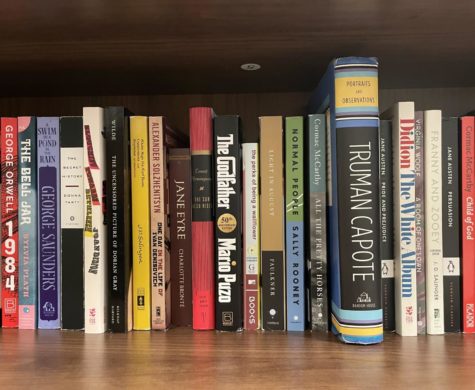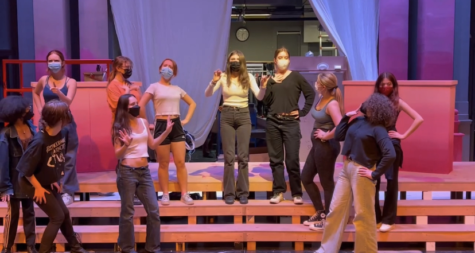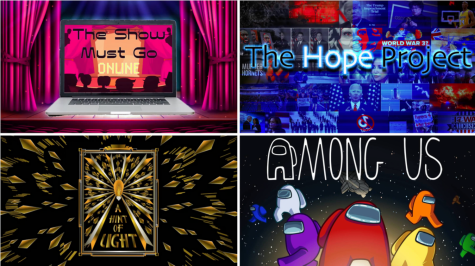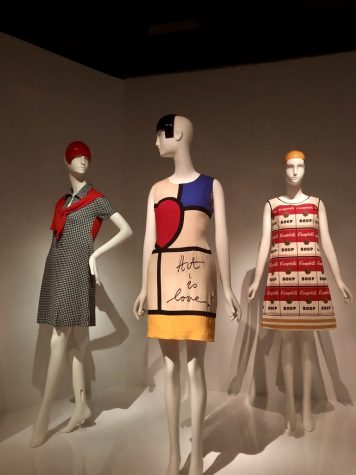How Do You Organize a Jazz Concert During a Pandemic? Mr. Robinson Has Answers
While Berkeley Carroll has done its best to make school feel as normal as possible in these strange times—and don’t get me wrong, the school has done a fantastic job at that—there’s one class that can never truly be the same: music. As someone who’s been in the jazz and wind ensembles since 5th grade, I can safely say that nothing beats an in-person band. In virtual band, we play on mute with recordings of charts, so we never actually get to hear what we sound like together. In a number of ways, COVID-19 has adversely impacted music classes. First off, it’s just less fun. I don’t think this fact needs much explanation, as I’m sure everyone can agree that all virtual classes take the social aspects of school away. What’s more, not being able to interact in a class that requires cohesion and cooperation hinders our ability to practice crucial musical skills, such as blending sound, monitoring dynamics, coming in on time, and so much more.
In the days leading up to Thanksgiving break, BC usually organizes several concerts, one of which is the jazz concert. Of course, you can probably see the issues with pursuing a live jazz concert during a pandemic: a group of 40 kids, all blowing air through their horns and emptying their spit valves, in an auditorium with a hundred tightly-packed parents. Yeah, doesn’t sound too safe. Yet despite these seemingly insurmountable challenges, the music department was determined to organize a COVID-safe concert.
The idea had been in the works for months. In fact, the idea goes all the way back to the summer, according to Mr. Robinson. (For those of you who don’t know him, Mr. Robinson is the new music teacher at the school; he teaches US and MS jazz ensemble and wind ensemble, along with MS music class for wind instruments.) When asked about the concert, he told me that the idea “came to be as a result of watching hours of YouTube mashup video performances over the summer […] the ones with all the videos of people playing their instruments at the same time.” He further explained that, while those videos are great, he wanted to do something different for the BC jazz concert. What he eventually decided to do was inspired by a video from the University of North Texas (UNT) jazz band. They had converted their auditorium into a giant (and socially distanced) rehearsal space. They also wore special masks with small slits cut into them, just large enough to fit the mouthpiece of a horn. On top of this, they wore bell covers—small pieces of fabric that cover the bell—over their instruments to minimize the air droplets that escape. Of course, there was no live audience, but the concert was recorded and sent out to the school. With this method, we would all be able to play together and perform a concert while still respecting social distancing.
With the idea in mind, Mr. Robinson had to start putting his plan into action. This entailed a great deal of work and research. “The first step,” Mr. Robinson explains, “was to present the idea to students and faculty to identify if there would be interest.” And indeed there was interest. When we (the BC jazz band) saw the video of the UNT jazz band, there was overwhelming enthusiasm to get together and perform as they did. With this substantial support, Mr. Robinson’s next step was “to present this to Brandon Clarke, who has been doing a terrific job of maintaining a very high standard of safety at our school.” Mr. Clarke gave Mr. Robinson a virtual tour of the Sterling Place theatre space, and they mapped out how they could “safely position students inside with regard to proper social distancing measurements and all of the same precautions you could see in the UNT video performance.” After this, they submitted their research, including the layout plan and the safety precautions, to Dr. Waller and Ms. Moore. “Thankfully,” says Mr. Robinson, “we were given the green light!”
Our jazz band is fairly large—we have nearly 40 students in the band—so in order to make the concert more socially distant, Mr. Robinson split the band up into two groups; one group went in on a Tuesday and the other went in on a Thursday. We decided on three charts to play: Cotton Tail, by Duke Ellington; Isfahan, also by Duke Ellington; and Frank Sinatra’s I’ve Got the World on a String. A smaller group was also chosen to play Autumn Leaves, a jazz standard, which was recorded and played at the Thanksgiving Zoom Assembly. Mr. Robinson remarks that running a concert in the middle of a pandemic was, needless to say, “very, very different” from what he was used to. “In a pre-pandemic world,” he elaborates, “75% of my time would be spent with choosing music, putting together a proper program of repertoire, rehearsing the ensemble, setting aside time for sectionals and small group work, and of course having a dress rehearsal or two.” Being someone who’s played in many jazz concerts at BC, I can confirm this to be true. Rehearsal time is generally the primary component of concert preparation. “The remaining 25% of my time,” states Mr. Robinson, “would be spent going over logistics: things like song order, how the group enters and exits the stage, lighting, sound design.” Now, how does this compare to a COVID-era concert? “During the pandemic, [concert preparation] has completely flip-flopped!” exclaims Mr. Robinson, adding, “I can say without a doubt that 75% or more of my time was spent with the logistics of running our recording sessions, with 25% spent on the actual music-making experience […] There is just so much to think about when trying to put together a production like this during a pandemic.”
Being a part of this concert was definitely an interesting experience. On the one hand, it felt strange to be far spaced apart from everyone else; in a jazz band, you’re typically less than an arm’s length away from someone in every direction. However, the slightly awkward feeling of being socially distanced was greatly outmatched by the joy and excitement we all felt when finally playing together. We’ve had one in-person class this year, and while that was nice, there’s something special about getting together to play in an actual concert. It really felt like a normal concert, despite not having a live audience and being separated from each other.
Instead of having a live audience, the performances were recorded. The recordings were sent out to the school on December 15th, so look out for those!








